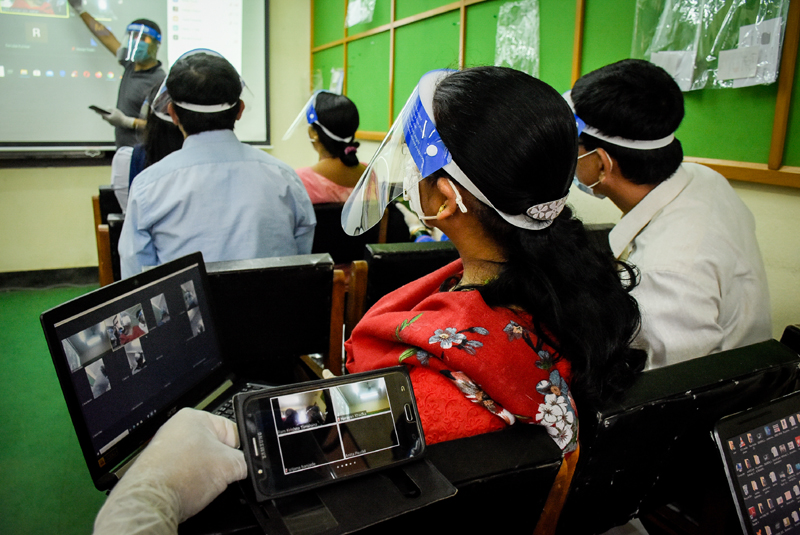Over two-thirds schoolchildren in Nepal deprived of education, says UNICEF
KATHMANDU, AUGUST 28
United Nations Children Fund Nepal today issued a report simultaneously from Kathmandu and New York stating that more than two-thirds of Nepali schoolchildren have been deprived of distance learning.
According to the recent Child and Family Tracker survey by UNICEF Nepal, only three out of 10 children have access to television, radio and Internet-based learning platforms.
Among them, only 80 per cent of the children use distance learning platforms for their learning activities Remote Learning Reachability report highlights significant inequality across regions.
Schoolchildren in sub-Saharan Africa are the most affected, where half of all students cannot be reached with remote learning.
Schoolchildren from the poorest households and those living in rural areas are by far the most likely to miss out during closures, states the report. Globally, 72 per cent of schoolchildren are unable to access remote learning in their countries’ poorest households.
In Nepal, the children from poorer households are less likely to access distance learning.
The data showed that only five per cent of children in the poorest households have access to and use distance learning. At least a third of the world’s schoolchildren – 463 million children globally – were unable to access remote learning when COVID-19 shuttered their schools, according to UNICEF.
Henrietta Fore, UNICEF executive director said, “The sheer number of children whose education was completely disrupted for months is a global education emergency.
The repercussions could be felt in economies and societies for decades to come.” At the height of nationwide and local lockdowns, nearly 1.5 billion schoolchildren were affected by school closures.
The Remote Learning Reachability report used a globally representative analysis on availability of homebased technology and tools needed for remote learning among pre-primary, primary, lower-secondary and upper-secondary schoolchildren, with data from 100 countries.
Data include access to television, radio and internet, and the availability of curriculum delivered across these platforms during school closures.
UNICEF is calling for urgent investment to bridge the digital divide, reach every child with remote learning, and, most critically, prioritise the safe reopening of schools.
Even when children have the technology and tools at home, they may not be able to learn remotely through those platforms due to competing factors in the home including pressure to do chores, being forced to work, a poor environment for learning and lack of support in using the online or broadcast curriculum, according to UNICEF. It urges governments to prioritise safe re-opening of schools when they begin easing lockdown restrictions.
A version of this article appears in e-paper on August 29, 2020, of The Himalayan Times.






